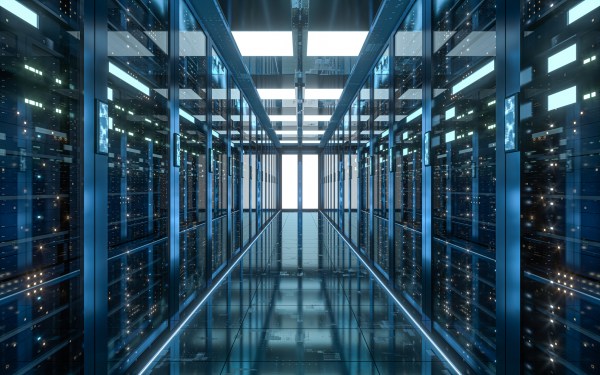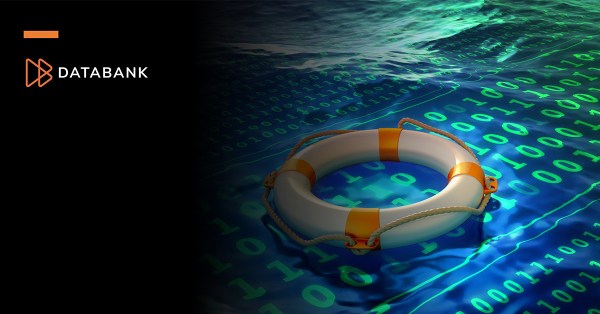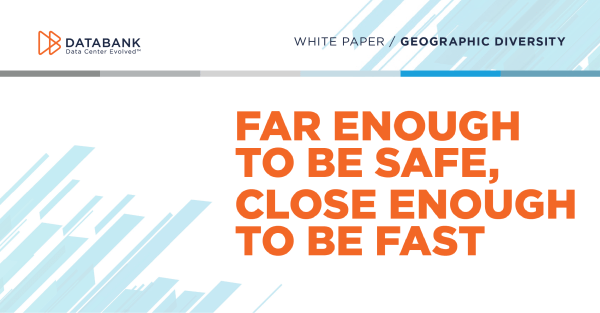How do data centers guard against natural disasters?
Imagine the shaking of an earthquake, a furious storm, or a quickly growing fire. Hopefully, you built your facilities to withstand such natural disasters.
Have you also considered the resiliency of your data center? At a minimum, your provider backs up your IT infrastructure and your critical data. Your provider also deploys failover capabilities to other regional data centers to remain operational when disasters strike.
However, sophisticated data centers go far beyond backup and failover capabilities. For example, when planning sites and building facilities, the leading providers both consider how climate may impact their operations as well as how their operations may impact the climate.
This is a vital perspective: There’s a close link between climate change and natural disasters that data centers consider in their siting and operations.
In this blog, we examine the measures data center providers take to protect the IT infrastructure and the data of their customers. We also present specific programs DataBank has implemented to safeguard its data centers against natural disasters.
The Keys to Holding Up Against Severe Weather
Data center providers implement a range of methods to assure their facilities can withstand severe weather conditions and climate change-related events:
- Built-to-Last Structures—Strong building materials like reinforced steel and concrete to survive earthquakes and strong winds.
- Strategic Locations—This includes siting data centers in areas less prone to natural disasters and using elevated platforms and advanced drainage systems to protect against floods.
- Smart Monitoring—Sensors provide real-time warnings about environmental conditions. These include seismic sensors to detect earthquakes and climate monitoring to track temperature, humidity, and other factors that impact conditions inside the data center.
- Backup Systems for Power and Cooling—To protect against the power outages that commonly occur during natural disasters. Providers proactively deploy backup generators, uninterruptible power supplies, and redundant cooling systems.
- Disaster Recovery Plans—Providers document all the steps for various disaster recovery scenarios. These include emergency protocols that guide staff on what to do in different types of emergencies. Providers also conduct regular drills to ensure they can act quickly during an actual disaster.
Continuity plans and recovery technology also require the knowledge of disaster experts. The leading data centers employ highly-trained professionals who specialize in emergency response. They act fast and coordinate responses with local disaster response teams.
DataBank Commits to Resilience
Resiliency against natural disasters has long been a cornerstone of data center operations at DataBank. We include resilience in our Environmental program and integrate resiliency throughout our design standards and operations. This oversight helps us maintain 100% uptime at our facilities during instances of electrical grid interruptions.
Our resilience strategy prepares our data centers for unexpected natural disasters. Here are some of the key tactics we employ:
- Siting facilities outside 500-year flood plains, significant earthquake zones, and recurrent natural disaster areas
- Following site frameworks that include climate risk considerations
- Assessing the physical stresses on facilities during data center siting and construction processes
- Designing buildings to accommodate temperatures of at least 115 degrees Fahrenheit
- Reinforcing facility structures to protect against earthquakes, hurricanes, tornados, and high winds
- Incorporating a minimum N+1 redundancy in power and cooling systems
- Conforming to building standards to withstand heat, floods, and fires
- Implementing physical adaptation measures to increase site resilience
We also engage third-party suppliers of building materials and technology services to increase value chain resilience. Along with climate risk assessments, we address the risks posed by climate change at each of our facilities. Each facility also has specific emergency action plans tailored to the attributes of the building and the local climate.
A Framework to Disclose Climate Risks and Opportunities
As part of the DataBank commitment to resilience to protect customer infrastructures from natural disasters, we produced reporting in line with the Task Force on Climate-Related Financial Disclosures (TCFD), which is now a part of International Financial Reporting Standards. In this report, we tied risks and opportunities to financial impacts to integrate risks into our enterprise risk management program.
TCFD’s framework helps data centers and other entities identify climate-related risks and opportunities and align with strategic planning. Examples of initiatives that emerged from our focus on TCFD were climate-related siting considerations for new construction and preparedness planning.
Maintaining Operations During Historic Texas Storm
When severe weather affected Texas in the winter of 2021, all eight DataBank Texas facilities—Dallas, Austin, and Waco—operated successfully throughout and after the storm. Using utility power with generator backups in reserve, we experienced no outages and no customers experienced negative effects. During this fluid situation, we also maintained ongoing communications with customers whenever power systems and fuel levels changed.
Although news stations reported delayed fuel deliveries, we saw no interruptions in fuel delivery because we pre-emptively arranged for deliveries before there were bottlenecks. Weather forecasts told us this storm was coming, so we topped off our fuel beforehand and arranged for deliveries in advance. We kept monitoring fuel use in real time and diverted deliveries among our Texas data centers based on usage. We also sourced backup fuel from out-of-state providers.
Our emergency response plan also included equipping all facilities with sufficient food and water supply and providing nearby hotel accommodations for on-site staff—if next-shift personnel were unable to travel safely to the data centers.
Safeguarding Data That Powers the World
The proliferation of disaster-resistant data centers throughout the world demonstrates the basic need for stability in unpredictable environments. From strengthened architectures to advanced business continuity technologies, sustainable energy, and climate impact, data centers represent a holistic approach to resilience. Safeguarding our digital lives makes sure all that important data that powers our world is safe and secure—even in the face of the most powerful natural disasters.







